By Martin Choo and See Shuen Ning, Nicole
In this article, Shuen Ning and Martin share the possibilities that Social Practice Art opens up to them as artists to engage with communities. Both currently majoring in Anthropology at Yale-NUS College, they participated in Social Practice Art, led by artist James Jack, in 2021. The module examined different forms of social practice art and culminated in students developing their own socially engaged artworks. Through reflecting on discussions, artworks made by peers in the class, and various artwork critique sessions, Shuen Ning and Martin explore how these possibilities opened up by Social Practice Art can lead us to desire, imagine, and shape a radical future; a future shaped for people, with people.
“Do you understand that your quality of life and your survival are tied to how authentic and generous the connections are between you and the people and place you live with and in?”
– adrienne maree brown, Emergent Strategy
As Anthropology majors who are passionate about art, it is perhaps natural that we reflect on the intersection of art and anthropology. But through a reflection of our time in our Social Practice Art class at Yale-NUS College, this journey fundamentally goes beyond the disciplinary distinctions between Art and Anthropology. It is, instead, a process that we find ourselves having taken together with people and communities.
In Social Practice Art, we spoke to friends, family, and strangers through interviews or everyday conversations. Seemingly simple questions helped unlock a whole range of possible avenues of conversations that fuelled our interest and curiosity in the lives of others. We really got to talk to people we cared about. To converse, but with the intention to learn and the empathy to feel, allows the possibility for a greater two-way mutual connection with others to emerge.
Such artistic processes open up possibilities to expand who the artist can be and what art can mean for diverse communities. As we listen and talk, we also build upon each other’s thoughts and ideas – radically listening, critiquing, and creating. Through this we can better understand the nuances and intricacies of the lives of others, placing us in a better connection to bridge the gap between ourselves. This class gave us a space to understand and connect to each other better –
a time of care, respect, and the entanglement of lives.
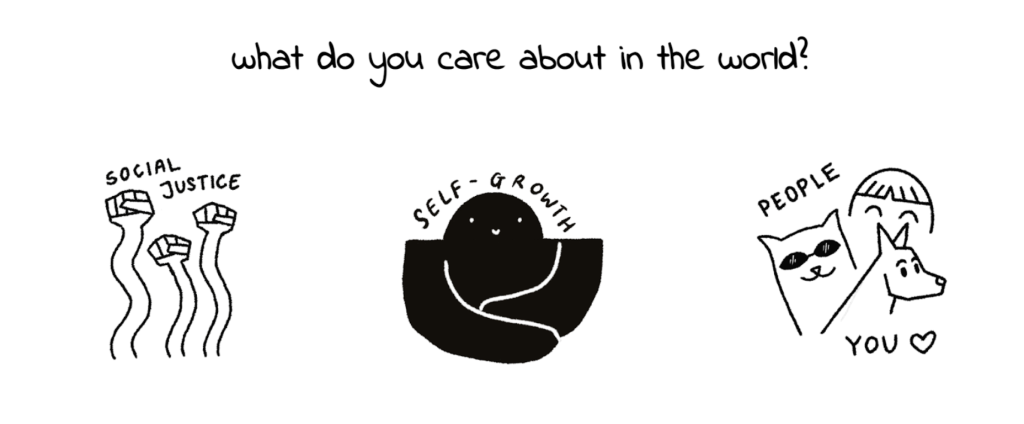
connecting people, connecting communities: radically listening
How do we change the way we hear without changing what we hear? How do we know we are listening to others as they mean it? Listening is not merely passive, it is an active process that allows us to empathize with others and question what we know. It allows a circular movement of ideas and affirmations of growth that doesn’t just move within the class but extends
outwards like concentric circles, rippling and creating change.
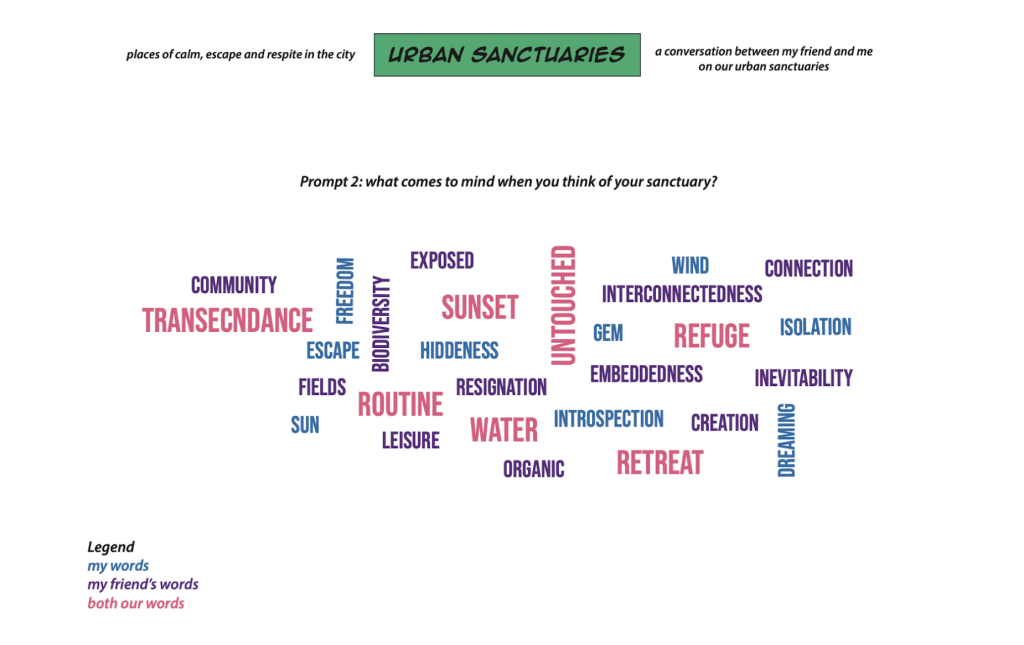
Truly listening to others in conversations about the ways they live in the world enables us to understand how they make sense of this world we all inhabit; what makes them humans. Radical Listening is a practice that “emphasizes listening without judgment, keeping silent and giving your full attention”. In a way, “radical listening” in our class and in Socially Engaged Art calls upon us to pay more attention to how we hear. It allows us to really consider and question what is being said and what it means in the context of another, and in the process confronting our own worldview. It is through radical listening that we can change the way we hear, enabling us to generate art and a radical future that listens and resonates with the intricacies and nuances of the way each individual sees the world.
And thus, change is
…not just an intangible blob-like thing that moves around us but manifests in a tangible way.
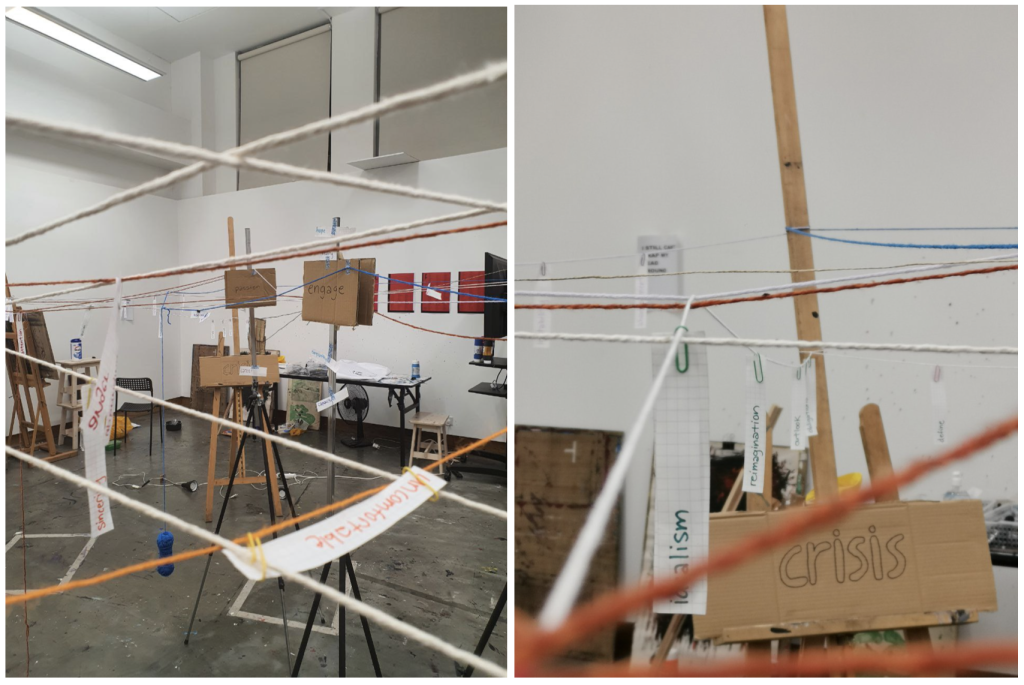
weaving intersecting webs of relations
We are creators, participants, and receivers of each other’s works. Not only within this class, but also as collaborators with the communities, causes, and ideas we pursue.
A core element of this course was the incorporation of artwork critiques. These critiques were crafted as a helping hand, encouraging each of us to think critically, reflect, and improve on our works with the help of others. What was important was that we actively listened and considered the multiplicity of views, each adding and merging with our own to form a new way, a new direction forward. It is this discovery and weaving of new influences that forge a new pathway towards a brighter, more radical future. Socially Engaged Art was a process not just for art creation and self-expression, but a way for individuals (and society) to question what it means to wonder and feel connected with others.
Admittedly, there was always an element of fear in these critiques. Fear that our work is not good enough. Fear that we are not representing or helping others in the “right” way. However, the process of critiquing, of opening oneself up to change and assistance from others, allows us to more carefully consider who we are making art for. It allows us to deeply contemplate the issues of our ethics and responsibility as artists, to see our artwork and artistic process as ever-evolving in response to the community around us. This community that builds each other up helps us to break down these fears that cripple us, rendering us stuck and afraid to make any change.
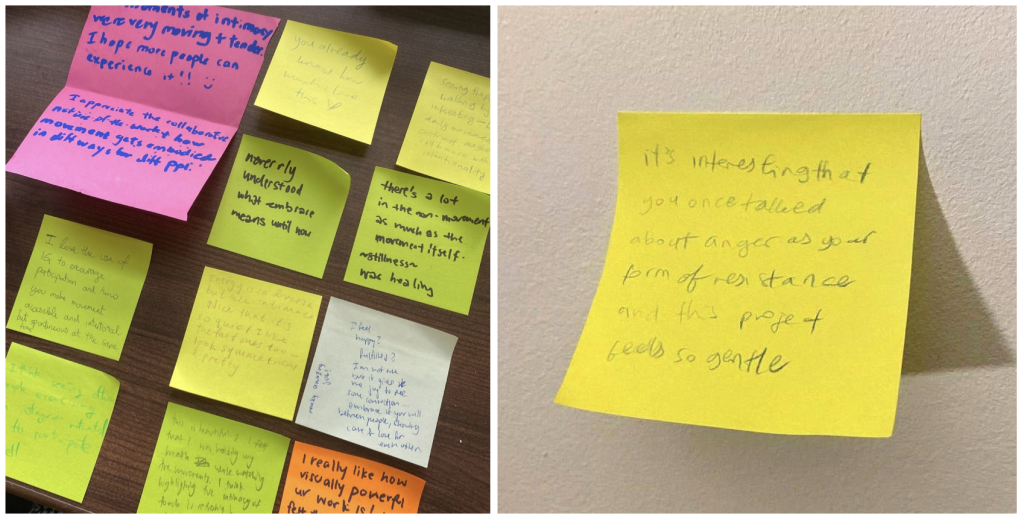
It is through this building of community that socially engaged art opens us up to the ways that we can imagine and generate a possible future in the ways we encounter the world. In facilitating and designing a future through our art and our actions, we have the potential to build communities that engage in empathetic and honest relationships. As a result, our art (and this article!) does not stop with us, just as how considering different and new worldviews of our peers opens up new possibilities for imagined futures.
This way of encountering the world–this pathway–will continue to extend in us and others, maybe not always through artworks, but
in the ways that we connect and make change meaningfully.
Every little task, every conversation, every word of encouragement from classmates and collaborators…these were all steps in a bigger process, not only as a sole ‘artist’ but more as a facilitator. A facilitator that brings together people in society to see, really see things that are there but not entirely visible, to get others to care and empathize with others. Resonating with the theme of the 2019 Singapore Biennale, “Every Step in the Right Direction”, every step in Socially Engaged Art is one in the right direction of feeling for and working with others.
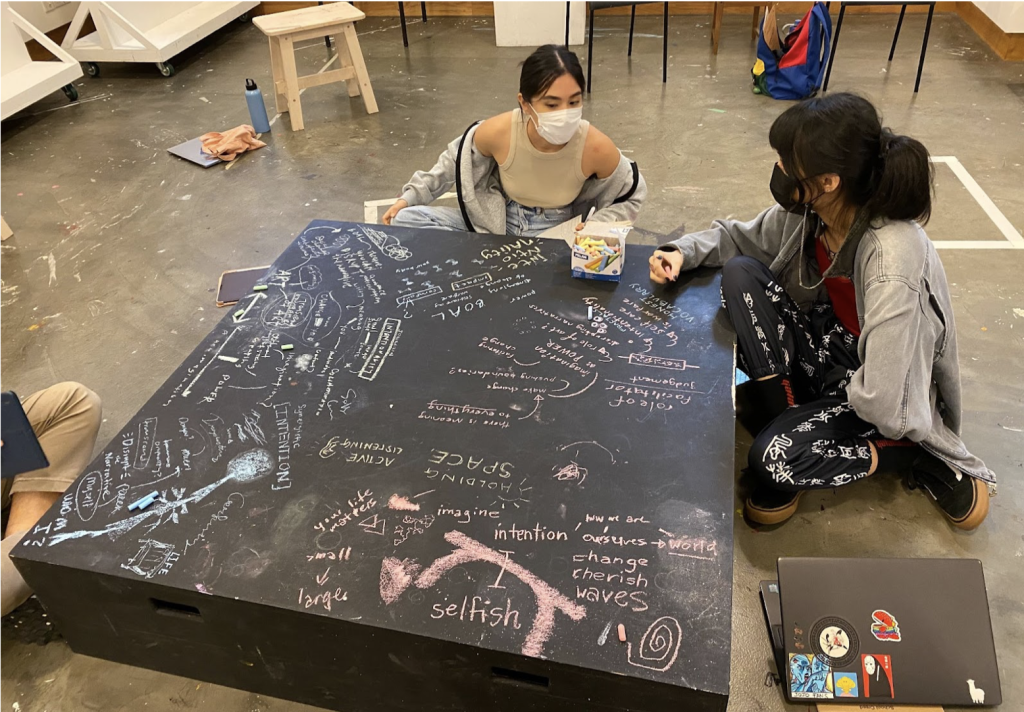
Social Practice Art then is a process to understand the world around us better, the product of this is secondary. It is through this process that we can uncover and tap onto the potential of others. More so, as a facilitator, such experiences empower others to be agents of change for generations to come. In moving beyond what we may think of what art is, socially engaged art allows us to move beyond our sense of self,
into the fundamentals of what makes us human.
socially engaged critique, change
Radically observing, listening, and conversing, a process at the core of socially engaged art, reveals opportunities to employ the things around us—lived experiences, observations, conversations—to connect ourselves with others. By situating the subject of art in the everyday, art is transformed from some foreign concept to one more accessible, beyond the white walls of galleries and the formal structures of art institutions, where the boundaries and definitions of who can create art can be broadened.
And in not being concerned with definitions of right, wrong, good, or bad art, but focusing instead on our process with the community, we go beyond external metrics of art valuation. In centering value as defined by the needs of the communities we work with, value becomes one which actively honors and amplifies the voices of people on the ground. Through this, socially engaged art invites us to reshape our own conventional understandings of value which are deeply informed by the broader systems and structures that measure the value of our existence on this earth by external metrics, into one that recognizes and empowers our existence as beings with our own unique sense of the world. The individual is able to take ownership of what is important to them and transform this ownership into power for others. It allows for the recognition and acceptance of a plurality of ways of responding and engaging with our world while maintaining hope for a desired future,
opening up the possibility of access to worlds of change.
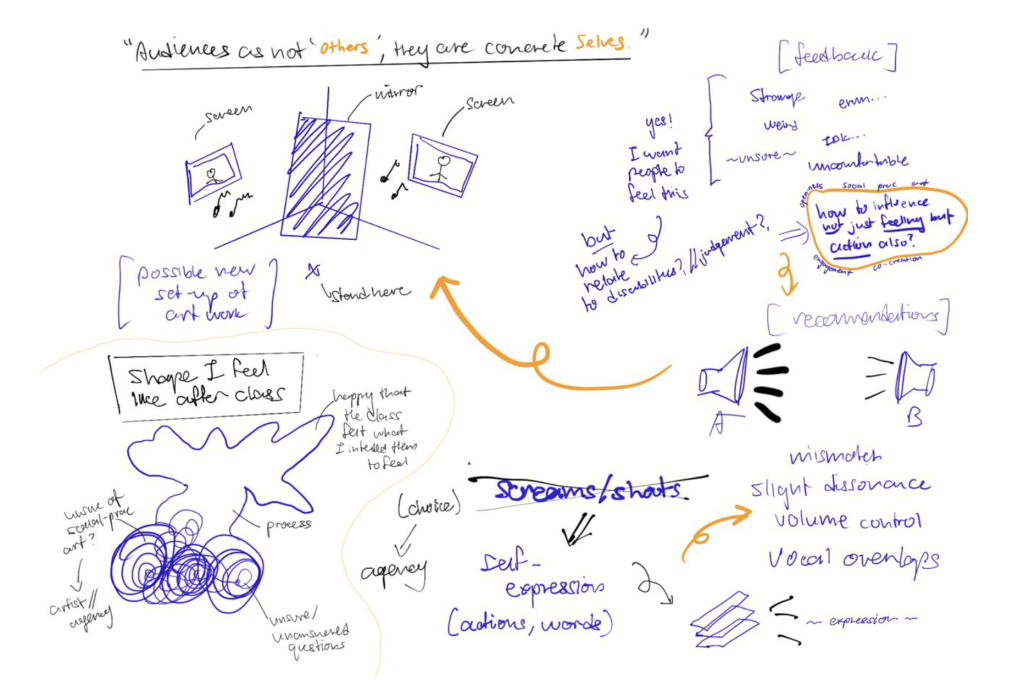
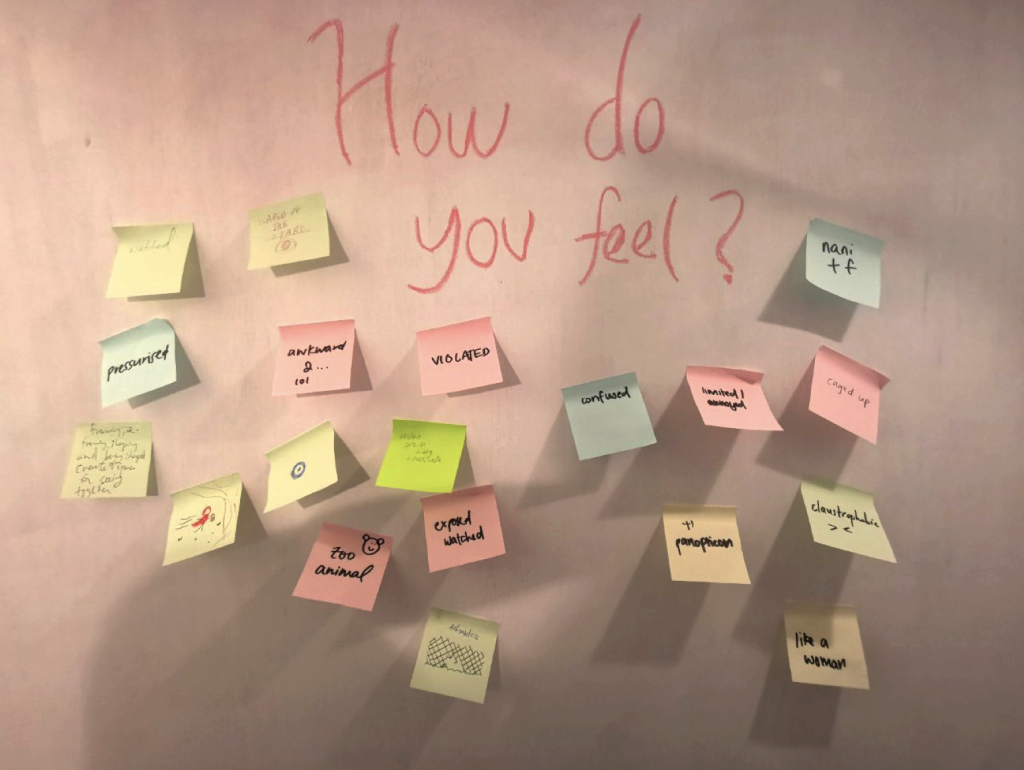
It is like we are vessels–vessels that transmit our energy to each other. There is an energy pulsing through each one of us, different rhythms at times, but all simultaneously moving. It is an active movement in which the artists and their artworks do not remain as static unmoving pieces. It is through these transmissions of energy that art and artists can no longer engage in “unconscious complicity” by being silent towards the larger contexts of oppressions and injustices around us, as Carol Becker writes about in her seminal essay “Social Responsibility and the Place of the Artist in Society”. Instead, we actively generate movement and energy that resists the structures and systems that break us down.
It is an art that is made about us, with us, for us.
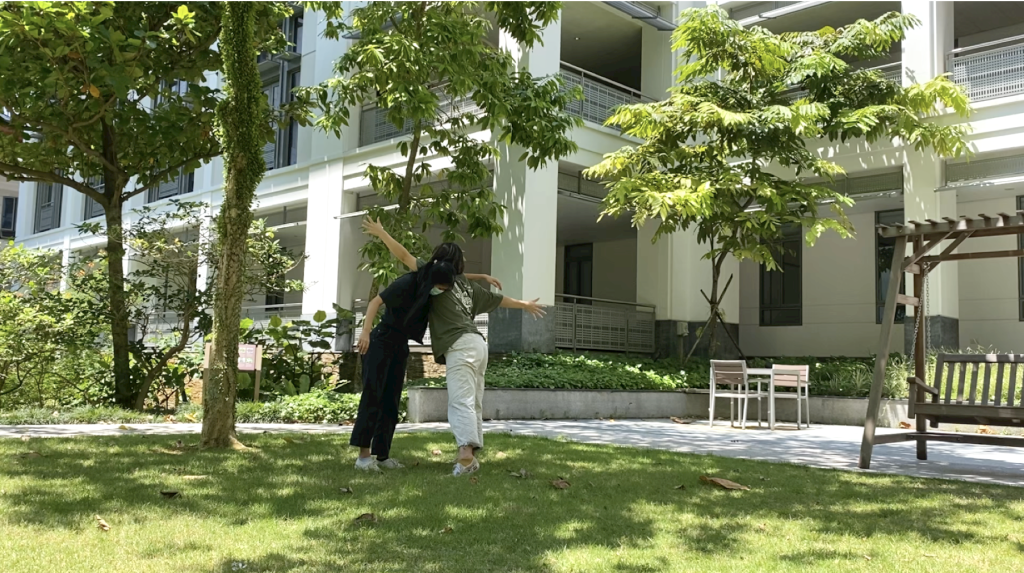
waves of change: an emergent strategy
On 27th August, it was announced that Yale-NUS College and the University Scholars Programme would be merged into the new NUS College. In the weeks and months that followed, current students, faculty, staff, and alumni voiced their frustrations, shock, and grief on various platforms. For us, the merger signaled a loss of a special place for art, or as succinctly put by Clara Che Wei Peh and Tee Zhuo, it was an “incalculable loss of this nurturing and unique environment for arts and culture.” How can we reclaim this “unique space for free expression and bold innovation”? How do we recover from such loss?
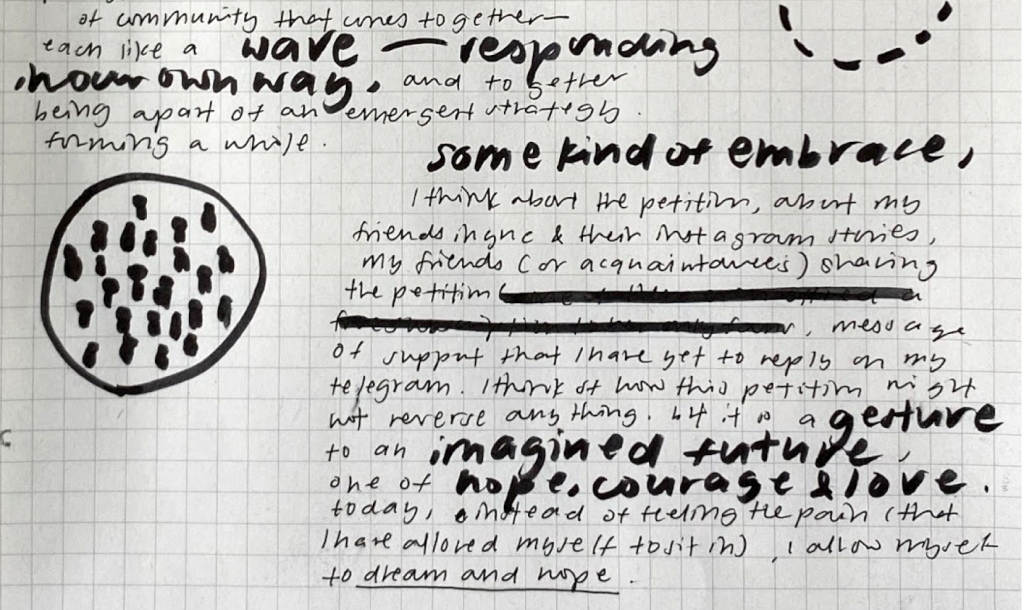
We circled back and found great hope in adrienne maree brown’s Emergent Strategy: Shaping Change, Changing Worlds that we read in our first week of class. brown writes about how crises around us (e.g. oppression, climate change, inequality, etc.) are massive in contrast to how small we are as individuals, and it is through the “matter of longing” and an emergent strategy that we are able to imagine and generate change in resistance. She reflects:
“Small actions and connections [can] create complex systems, patterns that become ecosystems and societies. […] Emergent strategy is how we intentionally change in ways that grow our capacity to embody the just and liberated worlds we long for.”
To shape a shared trajectory, this emergent strategy, we can turn to socially engaged art to bring individuals and the community together to imagine a brighter future. Such collaborative possibilities
pierce light through dark storm clouds,
illuminating an endless ocean of possibilities.
It is through the process of speaking with communities, of critiquing and collaborating, of fear and vulnerability, and of constant improvement and change that Social Practice Art offers a potentiality to notice the possibilities and imagined futures around us. Listening to and creating with communities generates authentic connections not just with humans but with other beings beyond the human with whom we share space on this earth. Through this, it calls upon us to be mindful of our positionality in this world, to reshift and see how we are implicated within broader communities. Through recognizing and collectively gathering our small individual diverse ways of responding, we can create “complex systems, patterns that become ecosystems and societies” together in an emergent strategy.
We are vessels of energy that tap onto this power of co-creation and imagination to generate a longing and desire for our own emergent strategy, always in circulation and movement, to rebuild ourselves and this world.
We have the potential and the power, with these communities and beings, to strive for our goals and aspirations. More so, art allows for a recognition of our unique individual experiences within the structures that oppress yet shape us, bringing forth these lived experiences and our dreams for a new, radical future.
So now what? Maybe we will continue to create in art, in podcasts, or to dabble in writing as we both are doing now, in academia, or even draft policies in the future. Regardless, beyond all of this, what we all fundamentally will do is to embody a socially engaged self, to acknowledge and move as though we are part of an emergent strategy. A way forward to imagine, desire, and shape a brighter future.
Let us move beyond our understanding of the existing, to believe, imagine, and create a world filled with vessels of energy towards a radical future.
Through these storms, art can light the way. And as with how we started the class, we conclude with brown’s poetic call:
“Together we must move like waves. Have you observed the ocean? The waves are not the same over and over – each one is unique and responsive. The goal is not to repeat each other’s motion, but to respond in whatever way feels right in your body. The waves we create are both continuous and a one-time occurrence. We must notice what it takes to respond well. How it feels to be in a body, in whole – separate, aligned, cohesive. Critically connected.”
Social Practice Art was an Arts Practice module cross-listed with Anthropology taught by James Jack in three iterations at Yale-NUS College from 2019-2021, examining different forms of social practice art in historically and culturally specific contexts focused on praxis in Asia Pacific. Through learning with artists including members of BRACK and others, the course culminated in socially engaged artworks created by the students in relationship with diverse communities.
You can view and listen to works created by some students here:
Kirsten Oliveiro and Yap Xin Yue: https://www.foodwithyou.co/
See Shuen Ning, Nicole: https://www.instagram.com/somekindofembrace/?hl=en
Archipelagic Podcast Episode four with Yap Xin Yue, Kelab Alami, and Yale-NUS students: https://soundcloud.com/user-78096659/archipelagic-podcast-stories-packed-within-stories-episode-4?utm_source=clipboard&utm_medium=text&utm_campaign=social_sharing
